The Best Winter Wiper Blades for Clearing Snow
Windshield wipers aren’t exactly glamorous, but the best winter wiper blades are crucial for safe winter driving. You can get away with good all season wiper blades if you live in the deep south, but if freezing temperatures and salted or sanded roads are winter norms in your area, you need to switch over in the fall. And with the ongoing extreme storms and temperatures of the 2022-2023 winter season, we’re not sure anyone is safe from winter weather.
Shopping for the best winter wiper blades isn’t as straightforward as simply figuring out what fits your car. You’ll need to consider your specific circumstances and the weather conditions you’ll be experiencing to find the right pair for the job. Winter holds cold temperatures, freezing water, snow, and ice in store, and that is hard on windshield wipers. The roads are often saturated with wet salt, too, which covers your front glass and dries into a thick mass that’s tough for summer wipers to scrape off. It’s why you need tough winter windshield wipers, and we’re here to help with the best for high visibility in low temperatures.
What Make a Great Winter Wiper Blade?
There are two factors that the best winter wiper blades need to account for: Cold, and ice. Not only do the blades need to be softer to stay flexible in cold temperatures to better curve around your windshield; but they also need to be slippery so they don’t drag and skip on freezing glass. Then, they have to be able to work in sleet, cold rain, snow, and ice, which love to clog up wipers. This can either keep them from bending so they only make contact in a few areas, or pack up along the edges so they don’t wipe at all. That’s why all our picks are either Bosch beam style, with no springs or metal to pack up with snow; or enclosed like the Michelins. There are pros and cons to each type, so for more information on the best winter wiper blades, refer to our table of contents.
Table of contents
- 1. Editor's Pick: Bosch ICON All-Weather Wiper Blades
- 2. Budget Pick: TRICO Ice Extreme Weather Winter Wiper Blade
- 3. AERO Voyager All-Season Windshield Wiper Blades
- 4. TRICO Chill Extreme Weather Winter Wiper Blade
- 5. Michelin Storm Hybrid Blade
- 6. Trico White Extreme Winter Weather Wiper Blades
- Do I need winter wiper blades?
- How do I pick winter wipers?
- Recent Updates:
1. Editor's Pick: Bosch ICON All-Weather Wiper Blades
These Bosch wipers are beam-type, meaning there are no moving parts between the mounting and your glass. Instead, the spring-like construction of the wiper holds the blade surface against the windshield for optimal contact.
Bosch's ICON wiper blades are designed with an integrated spoiler that works similarly to a race car's wing. Like the car's wing, the wiper's spoiler generates downforce to press the wiper onto the glass at speed.
An exclusive FX rubber dual compound is made to resist heat and ozone deterioration in the summer as well as stay flexible at all temperatures in the winter, which helps it to clear snow, ice, and rain, and Bosch says helps them to last up to 40 percent longer than other blades. The ICON wipers come made for specific vehicle fitments, meaning that you don't need to worry about adaptors. You just pick the right wipers for your vehicle, and the rest is easy.
Pros | Consistently the best year-round option available |
Cons | We find them hard to attach, can be several times the price of other wiper blades |
2. Budget Pick: TRICO Ice Extreme Weather Winter Wiper Blade
TRICO is the company that invented the windshield wiper blade way back in 1917. It remains one of the leading manufacturers of wiper blades in the world.
The TRICO Ice Extreme Winter Weather wiper blade is designed to protect the critical components inside the wiper arm from ice and snow, keeping them functioning properly even well below freezing. They start with a flexible arm design that helps keep them flat with your glass, then have rugged armor to keep ice from clogging the blade and stopping it from flexing.
The wiper blade itself is a heavy gauge to help protect it from damage when wiping over ice and snow that has built up on your windshield and is infused with Teflon for a smooth, quiet wipe every time. All necessary adaptors are included, and a range of sizes are offered.
Pros | Very affordable for a beam-style wiper, teflon coating, includes adaptors and clips |
Cons | Extra parts to throw away, hinge is exposed and can build up with ice |
3. AERO Voyager All-Season Windshield Wiper Blades
These wiper blades come with a protective cover and a one-year warranty, both of which help them stand out from the crowd. Because the rubber used in a wiper blade can start to break down as soon as it's exposed to UV light, the protective cover helps keep them fresh in the box.
A one-year warranty should give you four seasons of a clear windshield, but as an added bonus, this set of wipers comes with an extra rubber refill. Because with blade-type wipers, the wiper frame will last for many years; it's the small strip that touches the glass that wears out. A replacement refill lets you change just that edge, giving you maximum performance again down the road while reducing waste sent to landfill.
The aerodynamic design of the wipers is meant to improve performance and reduce noise while keeping your windshield free of ice, snow, and water. Further helping reduce waste, the wipers will be shipped in their manufacturer's box instead of a large shipping carton.
Pros | Replacement edges prolong useful blade life and reduce waste, sold as pairs |
Cons | Less flexible than other brands in very cold temperatures |
4. TRICO Chill Extreme Weather Winter Wiper Blade
This is an older-style wiper from TRICO, which in this case, means it comes with a lower price. Instead of a flexible one-piece design, it has a conventional hinged design.
To protect the metal parts from ice and snow and to make sure they stay flexible, the moving parts are encased in a protective rubber boot. While that works to keep out ice and snow, it only works as long as the boot is intact, making this style more susceptible to damage. Still, if you're using your wipers in occasional freezing weather rather than an extreme Midwest winter, wipers like this offer an affordable way to keep your front glass clear all winter long.
This design has been around for decades, so they are well-proven over time. A heavy-gauge precision-cut rubber wiper blade resists tearing in sub-zero temperatures, and each part comes with a pre-attached adaptor to make installation quick and easy. The wiper is made from coated steel for strength and performance as well as corrosion resistance.
Pros | Lower cost is a good option for milder climates, high strength steel frame |
Cons | Conventional hinged design, no teflon coating |
5. Michelin Storm Hybrid Blade
The Storm from Michelin is a hybrid design that combines some of the best features of the beam style with the best of the conventional models. Under the strong plastic outer cover is a mechanical arm that has multiple pivot points. There is also a beam-like spring, which helps keep the blade tight to your windshield glass, and the pivots allow it to maintain that pressure across the entire length, even if your windshield has compound curves that are difficult for either design to follow on their own.
Instead of the usual rubber boot, a hard segmented plastic cover keeps snow and ice from building up around the pivots, maintaining function even in cold weather. It also helps clear heavier snow from the glass.
Michelin says the wipers have WeatherShield Technology that helps to repel rain, snow, and ice from the blade cover, which further helps protect the wiper and keep it functioning well below the freezing mark.
Pros | Hard cover sheds ice and is aerodynamic, simple installation mechanism |
Cons | Some sizes can be hard to find |
6. Trico White Extreme Winter Weather Wiper Blades
The White line is wiper stalwart Trico's entry into the arena of premium beam-style winter blades. They're similar to their popular summer blade, but include plastic armoring along the spine to help prevent icing. The blades are otherwise conventional rubber, which performs well in cold temperatures. They're generally priced at between $11 and $14 each, which is extremely competitive, and are sold in two-packs for most applications. You'll probably need to know what sizes you need before you shop.
We'd place the Trico Whites higher for their good cost-to-performance ratio, but we do not like the plastic attachment mechanism. We find these to be brittle in cold weather, which could be a problem when you need them most. We'd recommend trying to put them on in a garage or warmer day, but they're cheap enough that they make a good option for a spare set to keep for emergencies.
Pros | Combines protective armor and a beam-style blade, sold in two-packs for many vehicles |
Cons | Plastic lock is vulnerable extreme cold, difficult installation |
Do I need winter wiper blades?
Photo credit: pamir / Shutterstock.com
If you're planning on putting snow tires on your vehicle, you probably need winter windshield wipers too, and for many of the same reasons. Winter wiper blades stay flexible at lower temperatures (so can age out sooner in hot ones) which helps them to work in the cold. They also use different construction techniques to protect the delicate wiper mechanism from that ice, snow, salt, and sand, which allows them to last longer in winter conditions than traditional windshield wipers. If you see winter temperatures below 40-degrees Fahrenheit, you should be getting those winter blades.
How do I pick winter wipers?
The first step to choosing the right winter wipers is a trip to your owner's manual. In there, you'll find what length of wiper you need, and that's normally going to be different between left and right blades. Since you'll probably need two different sizes of wipers, make sure you know if you're picking a single pack or a two-pack of blades because the latter will cost more and leave you with extras sitting in the trunk.
Some of the wipers on this list are exact fit, which means that they'll fit only one type of wiper arm attachment. For that type, which are generally slightly more expensive, you'll need to check the list of fitments on the description page to make sure your car or truck is included. Most wipers are a universal fit, meaning that they come with a number of adaptors to help them fit your vehicle. You'll need to pick the correct one using the wiper on your car now and usually a diagram on the packet that comes with the new blades.
Once you have size and attachment, next up is wiper style. A beam-style blade is a more modern idea, and one that lets the blade contact as much of the glass as possible, as firmly as possible. They work by turning the whole blade into a spring, one that can bend and flex but keep in contact with the windshield. Since there are no moving parts, they're more reliable, but they also tend to have a higher cost.
Traditional-style blades have a mechanism that flexes at multiple hinges and uses the force of the wiper arm to keep them against the glass. Their reduced flexibility can mean poor glass contact, and the hinges are prone to corrosion and sticking, making the problem worse. A protective boot makes them winter-ready, but will still likely not last as long or work as well as a good beam wiper blade.
Recent Updates:
January 3, 2023: Removed promoted product recommendation.
December 28, 2022: Awarded Editor's Pick to Bosch Icon. Added images and product links. Added Trico White to recommendations.
December 23, 2022: Added information to introduction.
November 28, 2022: Added a new promoted product recommendation.
November 10, 2022: Updated product links.
May 18, 2021: Removed the promoted product recommendation.
We are committed to finding, researching, and recommending the best products. We earn commissions from purchases you make using the retail links in our product reviews. Learn more about how this works.
Main photo credit: Peter Maguire / Shutterstock.com
Evan moved from engineering to automotive journalism 10 years ago (it turns out cars are more interesting than fibreglass pipes), but has been following the auto industry for his entire life. Evan is an award-winning automotive writer and photographer and is the current President of the Automobile Journalists Association of Canada. You'll find him behind his keyboard, behind the wheel, or complaining that tiny sports cars are too small for his XXXL frame.
More by Evan Williams



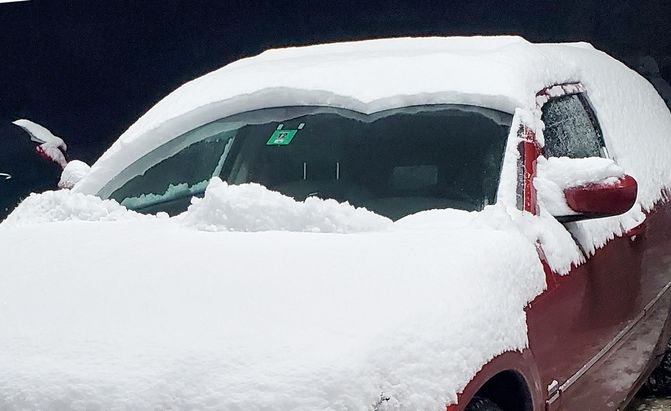

















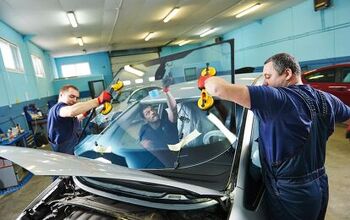





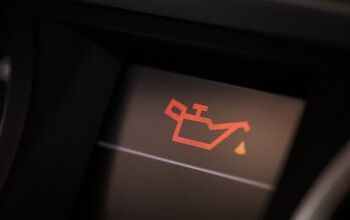
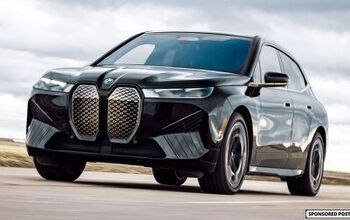
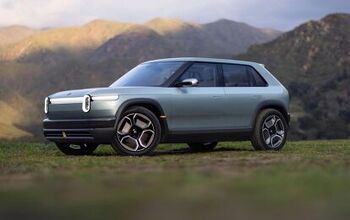





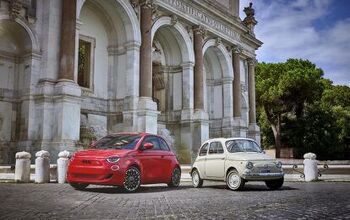
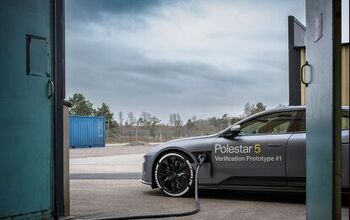
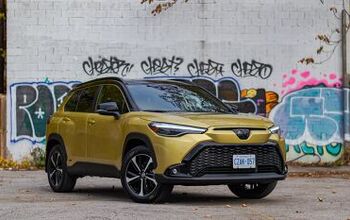

Comments
Join the conversation
I like to change my wiper blades every year.